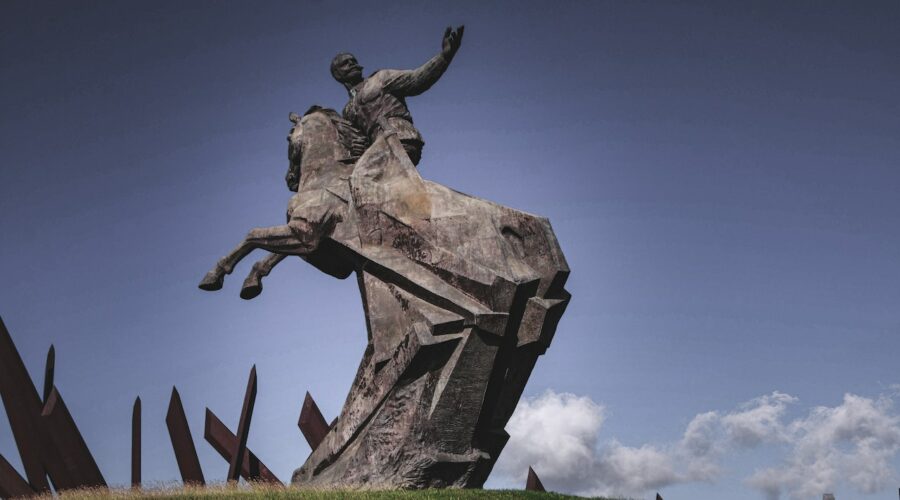Cuba was not the only Caribbean nation to experience a revolution and adopt communist ideologies in the twentieth century. The February Revolution of 1970 in southern neighbour Trinidad and Tobago proved the desire of many young Caribbeans to demolish colonial institutions and Euro-American capitalist power systems. It was Grenada’s revolution from 1979-1983, however, that truly captured the attention of the world, especially the United States.
The Grenada Revolution began on 13th March 1979 with the deposition of the first Prime Minister Eric Gairy by revolutionary Maurice Bishop, leader of the Marxist-Leninist New JEWEL Movement (NJM), one which advocated for educational and welfare reforms along with political liberation. The NJM quickly established the People’s Revolutionary Government (PRG) with Bishop as the new Prime Minister and suspended the post-independence 1974 constitution enabling them to rule by decree. Simultaneously, the NJM utilised their National Liberation Army to conduct armed takeovers of vital strategic locations such as police barracks and the national radio station.
Since 1974, Prime Minister Gairy had increasingly restricted the rights of political expression and attempted to quell all forms of opposition. On the 21st January 1974, known to witnesses as “Bloody Monday”, Gairy’s private paramilitary nicknamed the ‘Mongoose Gang’ was mobilized to subdue a mass protest resulting in the death of Bishop’s father, the injuries of numerous others, and a drastic gain in support for the NJM. The fraudulent 1976 re-election of Gairy due to his continual deployment of the infamous paramilitary, and rumours of his plans to assassinate leaders of the NJM in 1979 seemed like the perfect storm for Bishop’s party to gain traction.
By March of that year, most Grenadians supported the “Revo” (revolution) and once in full swing, Bishop and the PRG implemented social and political changes up until its end. The new government prioritised improvements to the education system, introduced a national literacy scheme, expanded free healthcare provisions, and encouraged voluntary labour schemes to construct housing and other physical infrastructure such as the new international airport with Cuba’s assistance. Additionally, the PRG authorised the creation of farming co-operatives to maximise the islands’ limited agricultural resources, decriminalised labour unions, and established the People’s Revolutionary Army (PRA). The domestic finances of Grenada would only stretch so far to fund these projects since sanctions had meant diminished access to the IMF and the World Bank. Inevitably, this led to international economic support from Cuba, the Soviet Union, and other left-wing allies much to the frustration of the Reagan administration.
However, a few of Bishop’s key decisions seemed contrary to the ideals of fellow NJM members and supporters. Firstly, the decision to maintain the British monarch Elizabeth II as Head of State seemed paradoxical. After all, the monarch was a figure of imperialism and the colonialism that had once afflicted Grenada and who revolutionary Grenadians wished to distance themselves from. Nonetheless, Bishop allowed Elizabeth II to remain Head of State and for the Crown representative Governor-General Paul Scoon to be kept in his position since Bishop believed that Grenada would mantain stronger legitimacy due to its ties to Britain and develop stronger international trade links. It should be noted that while Grenada’s relationship with the Crown did not change, the country was sanctioned by Prime Minister Margaret Thatcher.
Secondly, in the autumn of 1983, the central committee of the PRG attempted to convince Bishop to enter into a power-sharing agreement with Finance Minister and Deputy Prime Minister Bernard Coard to ensure more focus on political as well as social stability for Grenada’s future. This proposition caused a massive internal fissure within the PRG with accusations of Bishop deviating from the ideological prerogatives of the NJM and having no coherent vision. Following Bishop’s rejection of this proposal in October, he was placed under house arrest leading to demonstrations across the islands flaring up as Coard assumed leadership of the PRG. Despite attempts to evade re-capture having been helped by demonstrators to escape, Bishop and seven others were executed by a PRA firing squad on 19th October. What followed was the rapid collapse of the PRG and the six-day military junta led by former PRA General Hudson Austin. This, too, came to a grinding halt with the invasion of Grenada by the coalition forces of the US and six Caribbean nations on the 25th October 1983. Overall, from 1979-1983, Grenada experienced a unique position as a pro-monarchy, a (at times) stable socialist Caribbean nation, and a huge concern to the United States.
